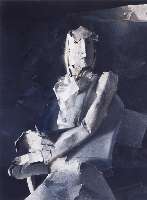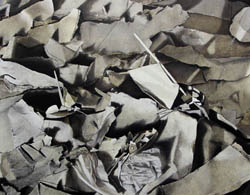

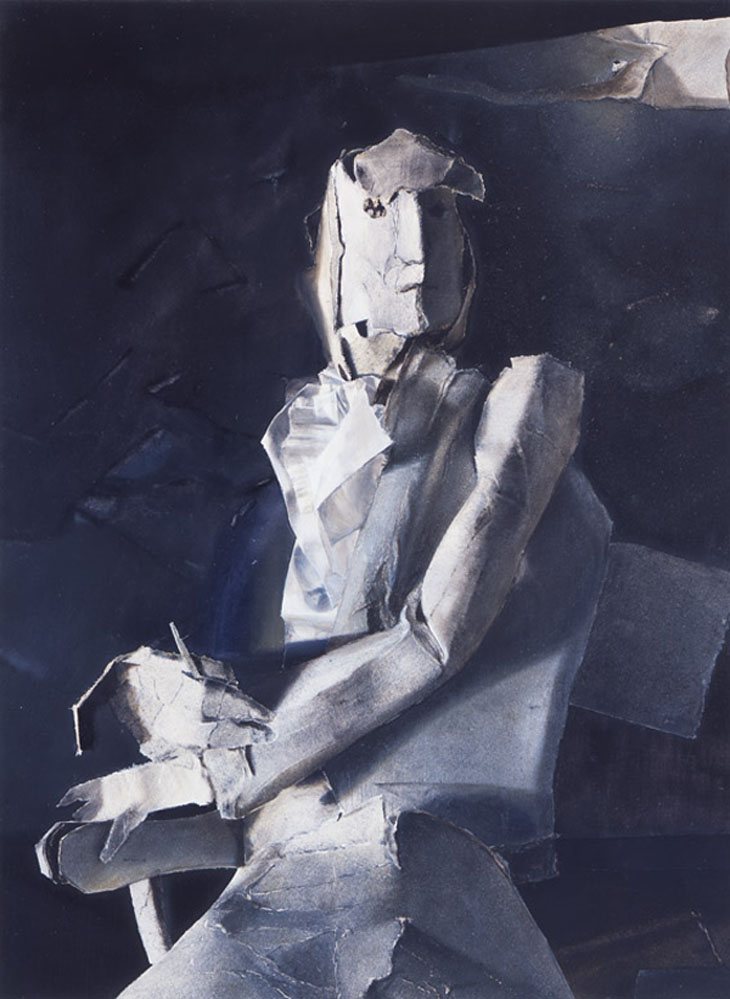
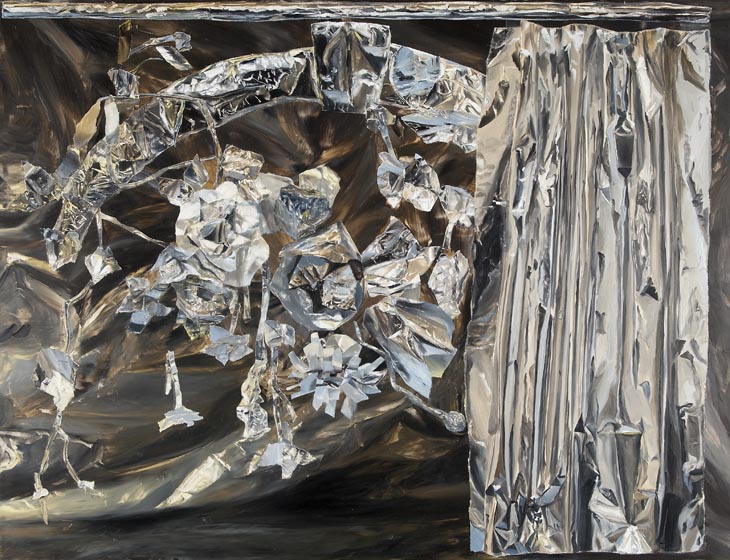
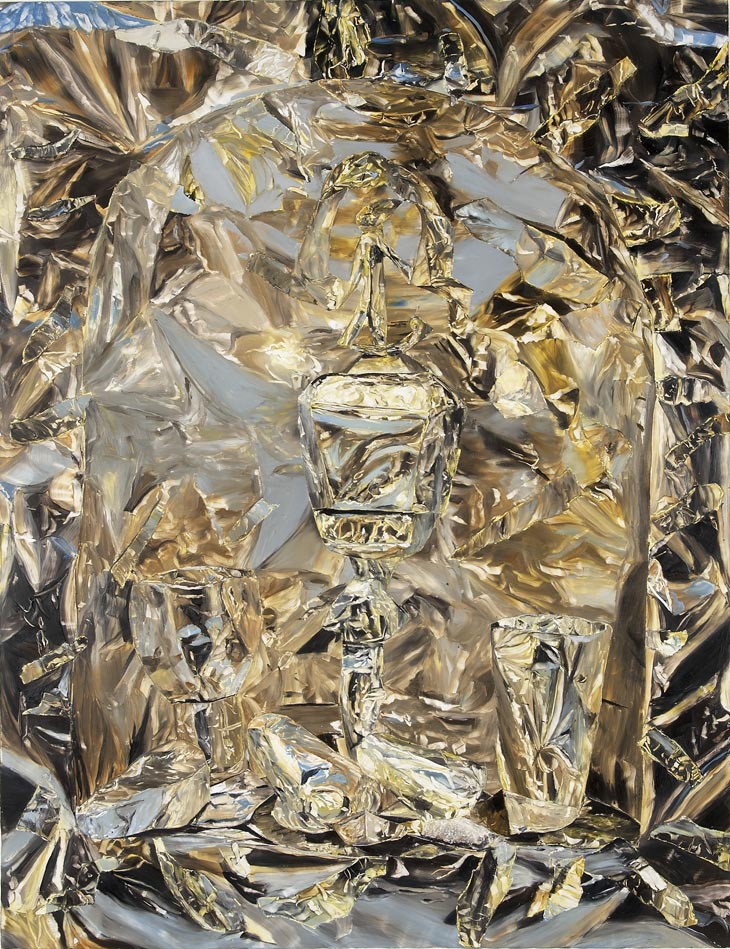
William Daniels
In their rustic aesthetic and exaggerated spatial rendering, Daniels’s paintings, at first glance, appear to be contemporary explorations of cubism. They are, however, immaculately drafted still-lifes. Daniels begins each piece by making immensely detailed collages: reconstructing well-known art historical paintings from bits of found paper and household products. Using these as maquettes, he then translates each fold, frayed edge, and bevelled texture into highly realistic paintings. The maquette made for The Shipwreck attempts what should be technically impossible: recreating the impressionist brush marks and ethereal light of a Turner painting in a monochrome cardboard structure. Daniels’s small canvas interprets the qualities of the model rather than the original, evolving the scene as a kind of anti-drama, eerily deadened and stilled.
Based on Thomas Phillip’s 1807 portrait, William Blake II is uncanny in its decrepit, post-apocalyptic semblance. Exchanging the rich warm hues of Georgian parlour painting for the ashen greys of his recycled study, William Daniels revives his art historical subject as a zombie-like effigy, an homage to a hero that’s both futuristic and decayed. Through Daniels’s concentrated process of working from constructed models, William Blake II resounds with a heightened sense of the presence of the subject before the artist, bringing to light issues of originality, authenticity, and the malleability of documentation.
In Still Life With Flowers And Curtains, Daniels reconstructs a 1658 painting by Adriean van der Spelt and Frans van Mieris. Drawing from the traditions of Dutch still life painting where scenes were often developed as composites and given unnaturally dramatic lighting effects, Daniels’s composition originates as an aluminium foil collage. Painting from this model directly, Daniels captures every shimmering wrinkle and dint, rendering their silvery reflections in unwavering detail. “It’s like painting pure light,†says Daniels. “The foil creates expressive ‘brush marks’ and enables me to paint in a certain way that’s removed from being expressive myself.†Daniels’s paintings from tin foil allude to notions of cultural worth and virtuality: their metallic sheen is reminiscent of religious paintings’ aureate devotion, and their flawless rendering draws from a tradition of hyper-realism set forth in ultra-modern scenes by artists such as Estes. “I like the value aspect of still lifes,†explains Daniels. “Still Life With Relief Chalice, Fruit and Glasses In A Stone Niche II looks like an expensive gold set up but is just silver foil. I think of it as an extension of the vanitas genre. It’s primarily about light – the colour is just coming from the reflections. Painting by its nature is just painting light, or perceptions of light falling on objects. In my work I try to take it a step further; they’re like ‘non-paintings’. It’s more about the perception of them, another layer of language.â€